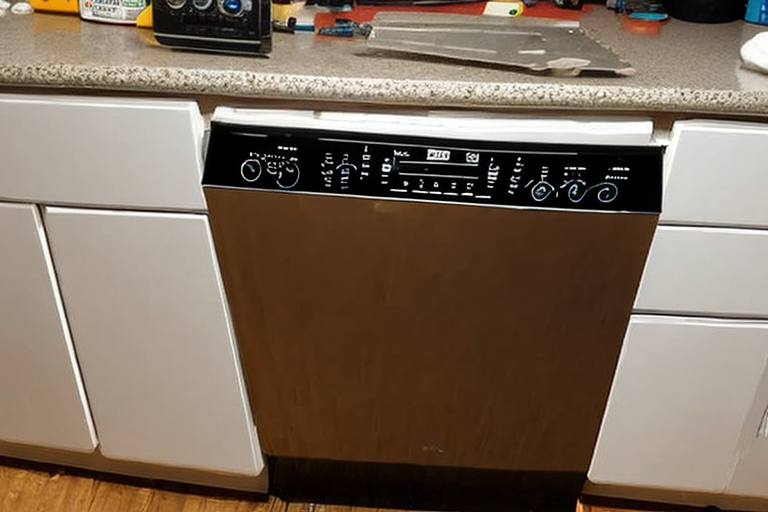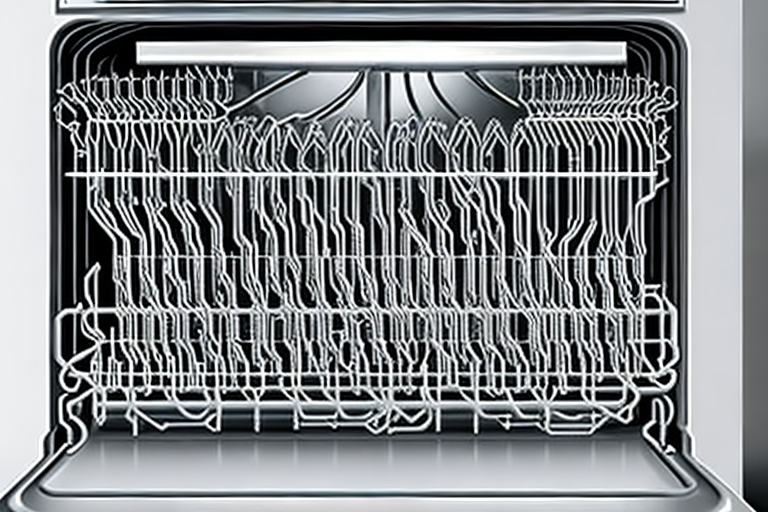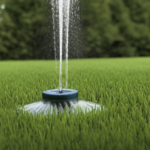Are you facing issues with your dishwasher? Does it fail to start, stop midway, or display error codes? It’s possible that the problem lies with the dishwasher’s printed circuit board (PCB). The PCB, also known as the dishwasher’s brain, controls various functions and ensures smooth operation. In this article, we will guide you through dishwasher PCB repair, troubleshooting common issues, and PCB replacement if necessary.
Dishwashers have become an indispensable appliance in modern kitchens, streamlining our daily chores and saving precious time. However, like any other electronic device, dishwashers are prone to malfunction, and the PCB is often the culprit behind these issues.
Understanding Dishwasher PCBs
The printed circuit board in a dishwasher acts as the central nervous system, controlling various components and functions. It receives signals from the control panel and sends instructions to different parts of the dishwasher, such as the motor, heating element, and water inlet valve.
Signs of PCB Problems
Identifying potential PCB problems is crucial in resolving issues with your dishwasher. Look out for the following signs that indicate a faulty PCB:
- Dishwasher fails to start or stops midway: If your dishwasher doesn’t respond when you press the start button or stops functioning abruptly during a cycle, it could be due to a malfunctioning PCB.
- Display shows error codes: Modern dishwashers come equipped with error code displays. If you see error codes flashing on the control panel, it indicates a problem with the PCB.
- Unresponsive control panel: If the buttons on the control panel don’t respond or the lights don’t illuminate when pressed, there might be an issue with the PCB.
- Inconsistent performance: If your dishwasher’s performance is inconsistent, such as irregular water flow, inconsistent drying, or incomplete cycles, it could be a result of a faulty PCB.
Troubleshooting PCB Issues
Before considering a PCB repair or replacement, it’s essential to troubleshoot the problem to ensure that the PCB is indeed the root cause. Here are some troubleshooting steps you can take:
- Check power supply: Make sure the dishwasher is receiving power by verifying the electrical connections and the circuit breaker.
- Inspect wiring connections: Check for loose or damaged wires connecting the PCB to other components. Secure any loose connections and replace damaged wires if necessary.
- Reset the dishwasher: Sometimes, a simple reset can resolve minor PCB issues. Turn off the dishwasher, unplug it from the power source, wait for a few minutes, and plug it back in. Then, try running a cycle to see if the problem persists.
- Clean the PCB: Dust, dirt, or debris on the PCB can interfere with its functioning. Gently clean the PCB using a soft brush or compressed air. Be cautious and avoid using water or any liquid cleaner.
DIY Dishwasher PCB Repair
If you have experience with electronics and are comfortable working with delicate components, you can attempt a DIY repair of the dishwasher’s PCB. However, it’s crucial to exercise caution and follow these steps carefully:
- Safety first: Disconnect the dishwasher from the power source and ensure you are wearing appropriate safety gear.
- Identify the faulty component: Inspect the PCB for any visible signs of damage, such as burnt or swollen components. Identify the faulty component that needs to be replaced.
- Order replacement parts: Purchase the exact replacement parts from reputable suppliers or directly from the manufacturer. Ensure compatibility with your dishwasher’s make and model.
- Soldering the new component: Remove the faulty component using a soldering iron and replace it with the new one. Take care to follow proper soldering techniques and avoid damaging the PCB.
- Reassemble and test: Carefully reassemble the dishwasher, ensuring all connections are secure. Plug it back in and run a test cycle to check if the PCB repair was successful.
When to Consider PCB Replacement
In some cases, DIY repair might not be feasible or successful, requiring you to opt for a PCB replacement. Consider the following situations when replacement becomes necessary:
- Extensive damage: If the PCB is extensively damaged or burnt, it may be beyond repair.
- Obsolete or unavailable parts: If the dishwasher is old or a discontinued model, finding replacement parts for the PCB might be challenging.
- Repeated failures: If you’ve attempted PCB repair multiple times, and the dishwasher continues to exhibit the same issues, it’s a sign that replacement is the best course of action.
Choosing the Right Replacement PCB
When selecting a replacement PCB for your dishwasher, keep the following factors in mind:
- Compatibility: Ensure that the replacement PCB is compatible with your dishwasher’s make, model, and version.
- Quality and warranty: Opt for genuine or high-quality replacement PCBs that come with a warranty. This ensures reliability and peace of mind.
- Expert assistance: If you’re unsure about the compatibility or installation process, consult a professional technician or the manufacturer’s customer support for guidance.
If you’re not comfortable with DIY repairs or unable to find a suitable replacement PCB, hiring professional PCB repair services is a recommended option. Experienced technicians have the expertise and tools to diagnose and repair complex PCB issues efficiently.
Conclusion
The dishwasher PCB plays a vital role in the efficient functioning of your dishwasher. By understanding the signs of PCB problems, troubleshooting minor issues, and considering repair or replacement options, you can ensure that your dishwasher continues to operate smoothly.
In case you need professional assistance or replacement parts, it’s advisable to consult atechnician or reach out to the manufacturer’s customer support. Remember to prioritize safety and follow proper procedures when attempting DIY repairs.
FAQs
Q1. Can I repair the dishwasher PCB myself?
While it’s possible to repair the dishwasher PCB yourself, it requires electronics knowledge and expertise. DIY repair is recommended only if you’re confident in your abilities.
Q2. How much does dishwasher PCB replacement cost?
The cost of dishwasher PCB replacement varies depending on the make, model, and brand. It’s advisable to contact a technician or supplier for accurate pricing.
Q3. Is it better to repair or replace a faulty PCB?
If the PCB damage is minor and repairable, it’s cost-effective to repair it. However, if the damage is extensive or the PCB is obsolete, replacement is a better option.
Q4. How long does dishwasher PCB repair take?
The time required for dishwasher PCB repair depends on the complexity of the issue and the availability of replacement parts. It can range from a few hours to a few days.
Q5. Can a faulty dishwasher PCB damage other components?
Yes, a faulty PCB can cause damage to other dishwasher components if left unaddressed. It’s crucial to resolve PCB issues promptly to prevent further damage.







